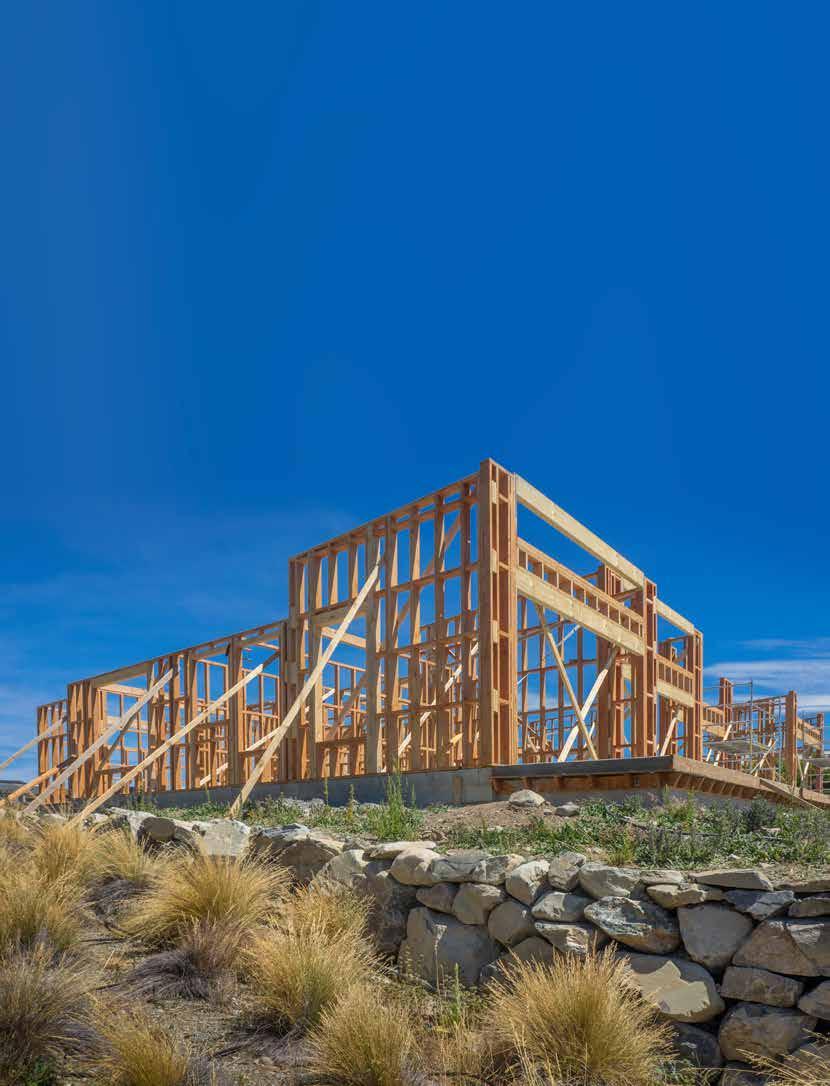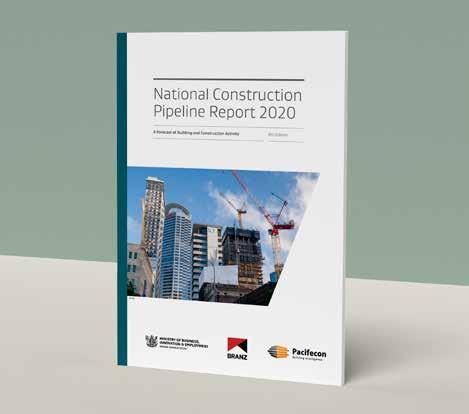
3 minute read
Future forecasts
The latest National Construction Pipeline report predicts a potential 31% drop in national construction value through to 2023 due to Covid-19 impacts—though there’s little sign of it right now.
The National Construction Pipeline report released by the Ministry of Business, Innovation and Employment (MBIE) in late December forecasts a decline in construction activity as a result of the Covid-19 pandemic, before starting to recover in 2023.
The report acknowledges that Covid-19 is an unprecedented event and there is still significant uncertainty around the forecasts. Master Plumbers CEO Greg Wallace would agree, saying it is questionable whether it’s possible to use existing data to apply in such unusual times. “The report also doesn’t reflect the thriving renovation market, as the data used is from consents,” he says.
The report predicts the biggest hit for residential construction, with the value of activity falling 43% from $23.7b in 2019 to $13.4b in 2023 as a result of an anticipated decrease in new dwelling consents—from the high of more than 37,000 in 2019, to an average of 26,800 per year for the next six years.
“Despite the forecast, demand for residential housing remains strong at the moment,” says John Sneyd, General Manager Building System Performance at MBIE. Recent data from Stats NZ show new home consents are currently at a 46-year high.
Construction Sector Accord Transformation Director Dean Kimpton says the industry should focus on the promising signs for the future, despite current uncertainty. “Covid-19 is unlike anything we have ever experienced and we need to continue to adapt to these changing times to the best of our ability,” he says. “We have done this superbly so far by proving our resilience during the Covid-19 lockdowns.
“Residential building makes up the bulk of construction activity and is typically the hardest hit by changing economic conditions. The sector has come out of Covid-19 in a better position than expected, but this report serves as a reminder that we need to continue to plan and prepare for whatever comes our way.
“Great people innovate, create, deliver excellent services, and help drive our businesses forward. Companies that take the time now to grow their people will be the ones that thrive in this new environment.”
STRONG GROWTH IN CONSTRUCTION: STATS NZ
A temporary decline in construction activity may be around the corner but there are no signs of slowing down just yet.
Labour market statistics from the December 2020 quarter show high rises in construction jobs, with an increase of 13,200 people employed in construction services, including plumbing, over 2020, according to the household labour force survey (HLFS).
“Delays in building projects due to lockdown restrictions along with more building consents issued after the lockdown may have increased demand for workers to meet higher construction demand,” said Stats NZ labour market manager Andrew Neal in February.
The increased number of jobs in the construction industry in 2020 offset losses in other industries, such as media and tourism, resulting in overall employment similar to the previous year. This showed how jobs in New Zealand had changed in response to Covid-19 restrictions, said Neal.
ABOUT THE REPORT
The National Construction Pipeline Report provides a projection of national building and construction activity for the next six years, through to 31 December 2025, based on current settings.
Commissioned by the Ministry of Business, Innovation & Employment (MBIE), it includes national and regional breakdowns of actual and forecast residential building, non-residential building and infrastructure activity.
The Report is based on building and construction forecasting by the Building Research Association of New Zealand (BRANZ), and Pacifecon NZ data.
Read the report in full at mbie.govt.nz
The National Construction Pipeline Report 2020 forecasts a drop in total construction value from $43.2b in 2019 to $29.7b in 2023. Residential construction value (the largest contributor to total construction), is predicted to fall from $23.7b in 2019 to $13.4b in 2023 before starting to recover.











